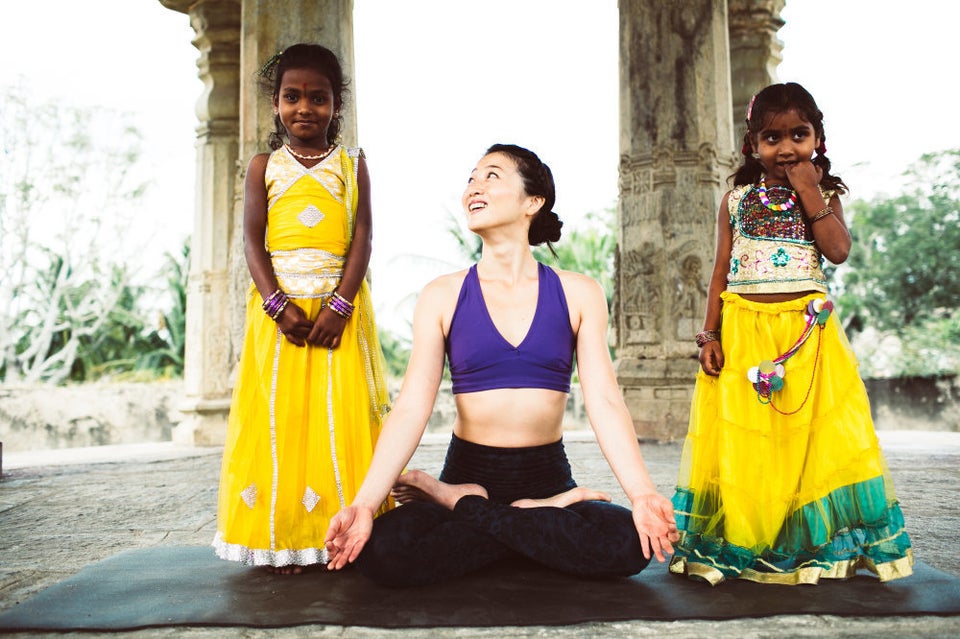Every artist has his or her own muse or source of inspiration. Fernanda Olivier was Picasso’s, Clizia was Italian poet Eugenio Montale’s; the interplay of light was Monet’s; and ballerinas were Degas’. Alessandro Sigismondi discovered a fertile space for artistic freedom and creativity when he started practicing Ashtanga Yoga.
Sigismondi was born in Italy, and worked there for 15 years in advertising as a copywriter. Today, however, he shuttles between India and Europe, working with yogis from all over the world, photographing and videotaping them as they practice their discipline (usually Ashtanga yoga) in order to capture the soul of this discipline through an intimate approach to its students.
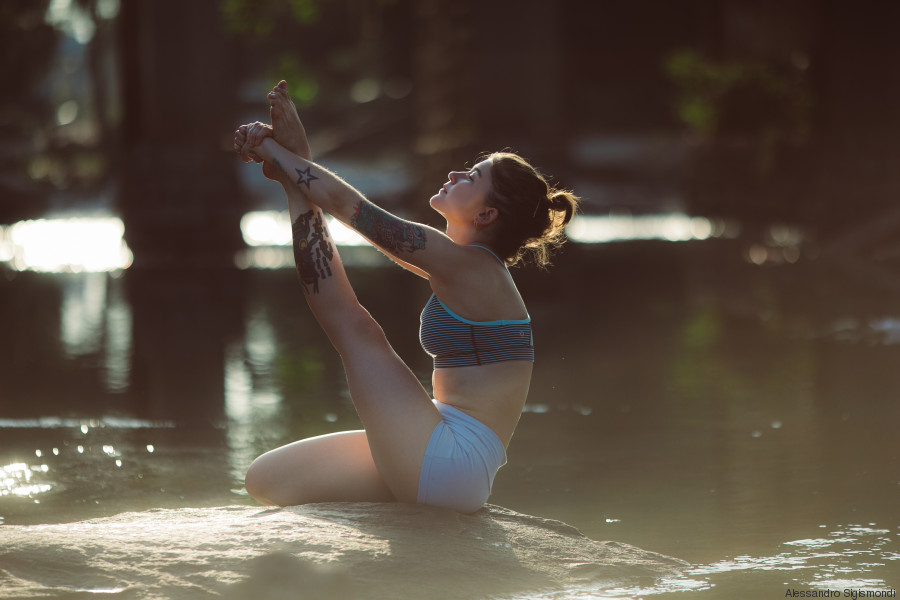
Ashtanga was introduced by the Indian master Sri K. Pattabhi Jois through schools in Mysore, in Southern India, and quickly spread all over the globe. Today Ashtanga is carried forward by Jois’s grandson, Sharath Rangaswami Jois, as well as by students who have progressed in the discipline and become certified instructors.
Fascinated by the atmosphere and intensity of the photographs and videos Sigismondi produces, HuffPost Italy got in touch with him to ask him to talk about his work and his conception of yoga.

When and how did you first start making videos about yoga? Was there any one particular event that inspired you to dedicate yourself to the artistic and aesthetic representation of this ancient practice?
Up until three or four years ago I was working in advertising. I practiced [Ashtanga] yoga regularly, and my son was born shortly thereafter. I loved the creative side of my job, but I couldn’t stand the work environment and the exhausting long hours anymore. I needed a break. So together with my wife, who also practices yoga, and son, we moved to Mysore, in India, for a few months. Mysore is the birthplace of Ashtanga yoga, where R. Sharath Jois, the grandson of Pattabhi Jois, the founder of this practice, lives and teaches.
In Mysore we met yoga masters and practitioners from all over the world, and then everything else came together mostly by chance. After a teacher from Costa Rica, Mariela Cruz, found out about the kind of work I used to do, she asked me, “Why don’t you make a yoga video?” I’d never made a video, much less set up a channel on YouTube! But since I’d worked for years alongside videomakers and film directors, I felt comfortable with it right from the start. The video we made was an instant, unexpected hit. It was picked up by the Elephant Journal, and from that moment forward I started making contact with a range of different teachers and institutes.
Now I travel a lot, moving from school to school, often taking part in retreats and workshops, but I try to spend at least four or five months every winter in Mysore. I love my family (my son is now four years old), and I always try to bring them along with me when I’m traveling, as long as there’s enough time in my schedule.

How does the genesis of a video or photo shoot develop? Do you agree on a new location, music and stylistic choices each time?
It’s very important to me that I meet and get to know the person I’m going to be focusing on. It’s fundamental that I understand how he or she conceives of practicing yoga on an intimate level so that I can represent them through music and images. At that point I suggest a location, or other aesthetic aspects, or the set for the video.
But at the same time, it’s very important that I manage to maintain a certain freshness in my approach. In advertising, everything is planned and controlled down to the smallest details; every second of a commercial is studied and planned for months. Personally, I find that works given the context, but is far too sterile for other creative environments. I like it when things are created on the spur of the moment, according to the circumstances and the person I have in front of me.
On my side, I try to stay open and receptive to everything that’s happening around me so that I can capture that which my subject has inside, as well as create a story for the work I’m producing – that’s something I care a great deal about. Sometimes, for example, certain elements that have a strong effect on me might emerge from a very simple, normal conversation, so I decide to include them as a voiceover inside the video.
In order to keep the experience fresh and spontaneous, I also try to edit and finalize the video during the days right after the shoot. This gives me the sense that I’m preserving all the creative energy released during the shoot, that I haven’t let anything escape.

What do you want to transmit through your images?
I would love to be able to inspire as many people as possible, and I would like to motivate people to at least try the discipline. I’d like to arouse their curiosity. There is a lot of prejudice and ignorance surrounding yoga. I put everything that Ashtanga is for me and for the people I work with into my images, trying to remain faithful to the soul of this practice, which unites body and mind, physicality and meditation in a profound manner.
Sometimes I wonder if I’m doing all this the right way, especially whether or not rendering the practice aesthetically appealing – given that several elements are emphasized and made “entertaining” through the landscape, the surrounding environment and the music – can still be a source of positive inspiration for the people who watch it. But the feedback I’ve gotten so far has been extremely encouraging, and hearing that some people have started practicing Ashtanga after watching my videos is an enormous source of inspiration.
Many yoga positions, especially the most advanced postures, are similar, if not identical, to those of other disciplines, for example gymnastics or circus arts. Yet that which they contain is completely different. My aim is to manage to transmit that which lies behind the practice as well: the interiority and concentration hidden in each movement, in every breath.
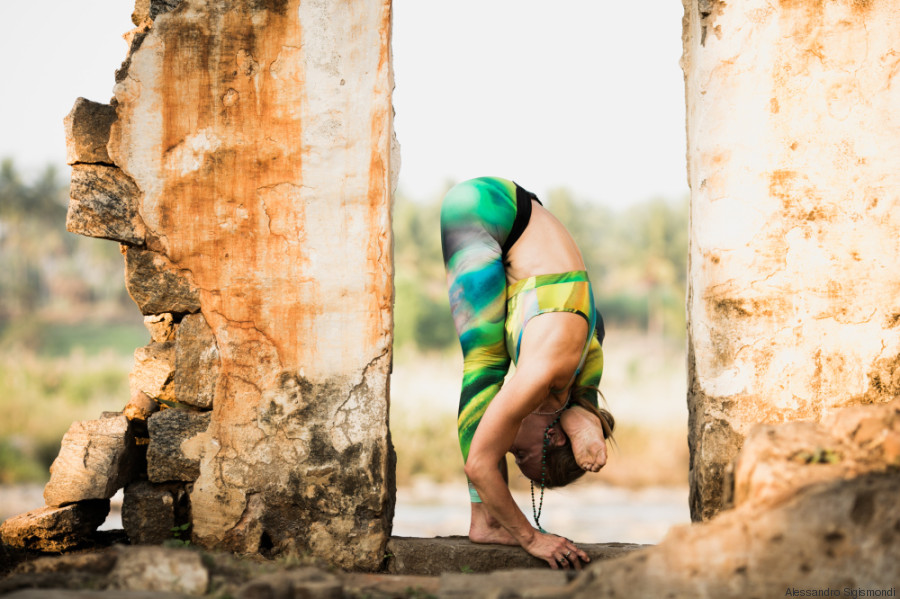
Watching your videos, it seems like the style choices you make are almost all aimed at transmitting the personal and intimate conception that each of your subjects has of yoga. Would you say that’s accurate?
“Yes. Alongside the discipline, there’s the personal way in which each person, each yogi, reinterprets and lives it. Even though Ashtanga consists of fixed sequences of positions, the so-called “series,” every practitioner has her or his own personal approach to it. What counts is the personal path of each yogi. That’s why there’s no one practice that’s better or worse than the others.
I think that creativity can be expressed at its utmost when it starts from a given schema, not on a blank page or in an empty space. For me, creativity means knowing how to channel something, provide a new perspective, or a particular shade and tone to an established model. This was true in my former profession – advertising – just as it is in yoga. It’s the same for the art of photography (where in the end, the rules are always the same: exposure, light and the subject), just as it is for life in general. We all move inside fixed schemas, but each of us gives them their true form and animates them.
In the same manner, the fixed sequences of Ashtanga come to life thanks to the people practicing them, and they in turn are transformed, expressing their true natures. What I’m trying to show is the human aspect, which is often in relation to the surrounding environment. I’m truly happy that this aspect is clear in my work: Every yogi is different, and practices the discipline in a different manner. My aim – maybe sometimes even unconsciously – is to give voice to each subject. That’s what I orient my stylistic choices (photography, editing, sets, music) around.
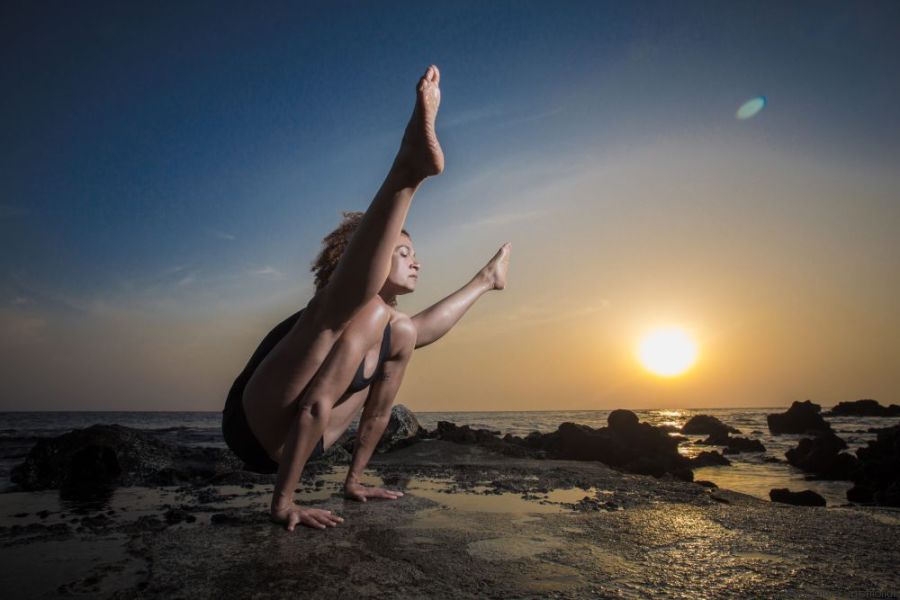
Do you worry that the attention you place on the body and physicality through your lens constitutes something too Western, and distances you from the traditional Indian approach?
From what I’ve seen during my travels in India or around the world, it’s not so much a difference between a Western or Indian approach. It’s more the difference between a traditional and non-traditional approach, depending on the country you’re born in. While Americans are great innovators, Indians are no less capable. Tradition doesn’t have to mean just India, but the act of rigorously following the teachings of your instructor.
Ashtanga is a traditional style, based on a strong sense of discipline and respect for the master. One of its peculiarities lies in the physical effort required to move forward in the practice. Ancient texts talk about the yogi’s body as “slim, dry and muscular,” so the body always plays an important role. The difference is that for yogis, a body that’s in healthy and in shape is merely a “collateral effect,” a way to explore the self, to meditate and hopefully reach illumination. None of them are trying to build a perfect body. It’s merely a tool that can be used to reach something far more important. The error, if that’s what you can call it, of the Western world is to consider being physically fit as an end in and of itself, rather than simply one part of the process.
The attention I pay to the body is aimed at the totality of the organism in order to draw out interior content, to show that this is truly the practice of meditation in movement. I think that people can see this in the faces of my subjects: I always try to capture the moments of particular concentration and intensity in the eyes and expressions of the yogis I work with.
That’s where you can see the differences between yoga and other forms of physical exercise. It’s in the aura of meditation and gathering together that accompanies the effort and movements. I’m fascinated by how other yogis often find themselves in extremely complicated positions, but at the same time their faces are completely relaxed and tranquil, or animated by a magnetic intensity. That is the essence of yoga: a union between body and mind, the exterior and the interior.
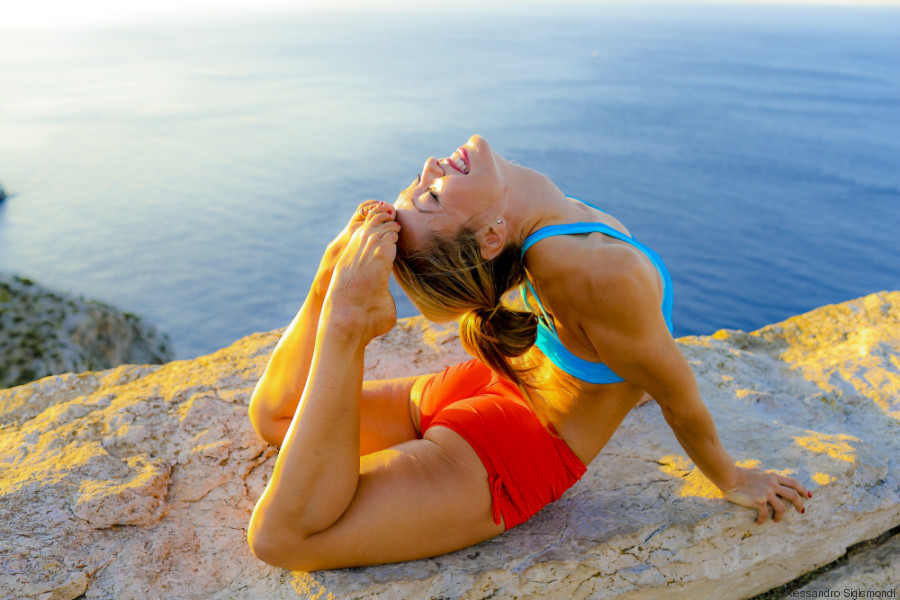
Have you learned anything new about yourself and this practice during the past three years you’ve spent filming, photographing and following yogis all over the world?
A great deal. Working with people who are so advanced in this discipline has been an enormous source of inspiration for me. The greatest lesson I’ve learned is that nothing happens by chance. All accomplishments are the result of extremely hard work and effort. Even people who perform complicated positions, postures that seem impossible, have to make a great effort to do so, and you can’t accomplish that without willpower. Even the most physically gifted yogis have had to work a great deal at it, dedicating a lot of time and energy to the practice.
The yogis I’ve worked with have taught me tenaciousness, discipline, humility and respect for yourself and what you do. I believe those are fundamental values for every stage of life.
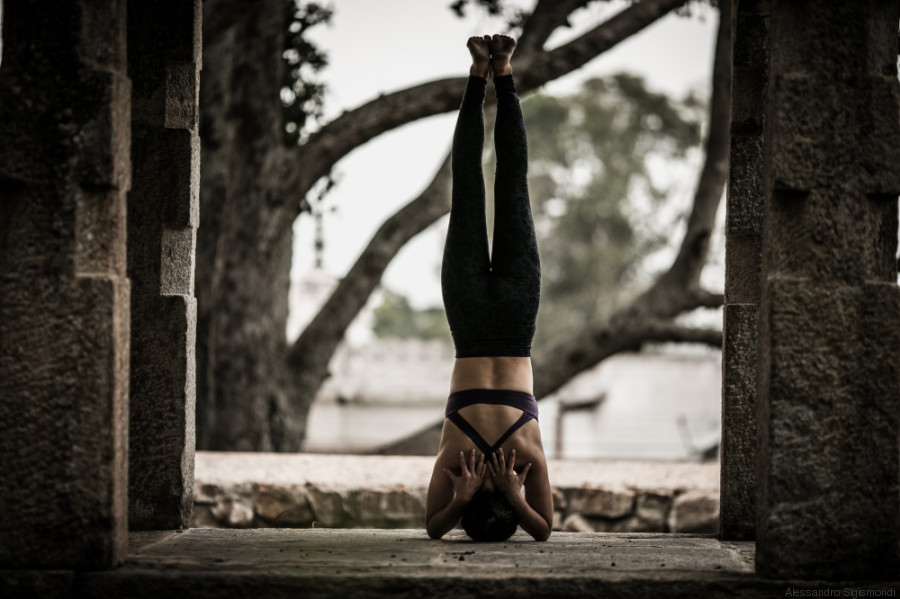
Where do you see yourself in the future? Do you have any other projects in mind?
I don’t know where I see myself, but I know what I’m searching for and I have a series of projects in mind. I really love what I’m doing right now, but at the same time I don’t like repetition, and I’m always on the lookout for new stimuli and new ways to innovate in what I’ve dedicated myself to. Yoga is a fundamental piece of my life, and I feel lucky that I’ve been given the chance to work in this environment. I’m working, but at the same time I’m breathing and experiencing atmospheres that I feel I’m a part of; the yogis I’ve collaborated with and met are often friends, or in any case people with whom I share the same world view.
So I’d like to keep doing what I’m doing, but evolve the results I achieve and the “formats” I utilize. For example I will start filming yoga lessons (this time not just Ashtanga) so that I can make them available online, maybe on a dedicated YouTube channel. I’m also planning on following R. Sharath (the grandson of Pattabhi Jois, the founder of the Ashtanga discipline) on his tour around Northern Europe, India and the Himalayas. My plan is to shoot a documentary on him and his teachings.
In general, my priority is to work with people I believe in. I have a profound faith in yoga, but I can’t exclude the idea that I might like to work in other environments someday, as long as they are coherent with me, my way of being and I can lend them my full support, for example projects for the environment or sustainable agriculture. Who knows? I feel very open about the future.
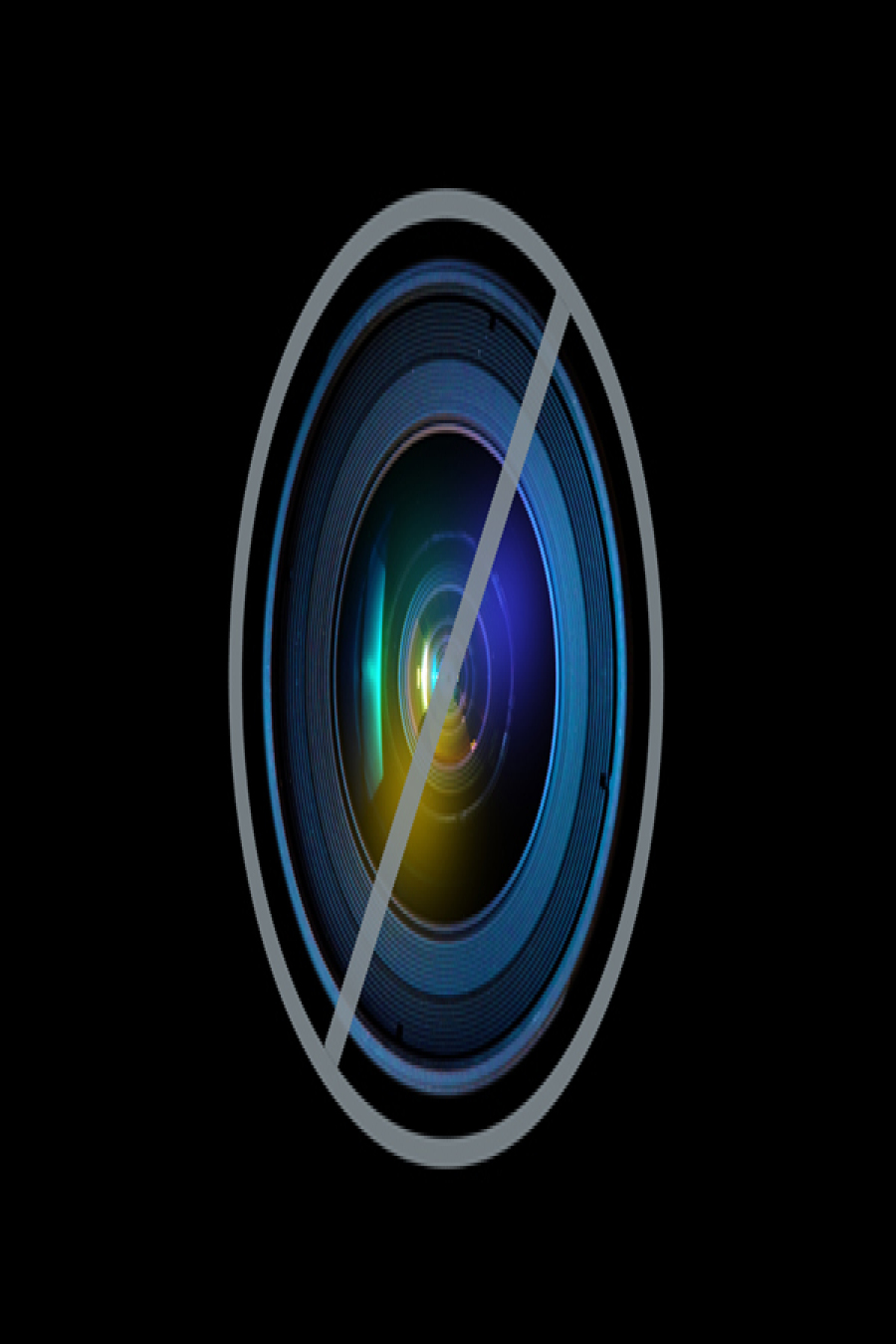
After this profound, enriching discussion, what words would you like to leave behind to accompany your images? What is your conception of the human body in movement?
I would love to emphasize the spontaneity and freshness of the practice; the blend of force and flexibility characteristic of yoga, which makes this freshness – in a manner that is only apparently paradoxical – the result of great dedication. I’d also like to underline the incredible transformation that practicing yoga has on people, both on a physical and mental level. I hope I’ve managed to capture and immortalize that in my work.
The daily, aware practice of yoga generates incredible metamorphoses. For example, there are yoga teachers – right now I’m thinking of B. K. S. Iyengar [ed. note: Founder of a style of the same name who passed away in 2014] – who seem like completely normal people, with bodies that are neither sculpted nor perfect, yet when they start practicing yoga they are completely transformed: Their chests expand, their muscles tighten, their bodies are modelled on their postures.
These people are pervaded with unique elegance and grace, even as their faces grow more relaxed. Dedicating yourself to yoga in a profound manner – as I hope I’ve managed to communicate – is much more than physical training or exercise. It generates a metamorphosis in the body and the soul. It unifies, elevates, carries you elsewhere.
Just practice it, and you’ll see…

This piece originally appeared on HuffPost Italy and was translated from the original Italian.
